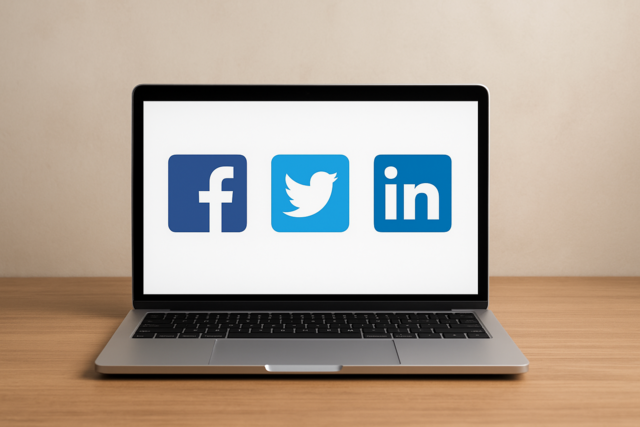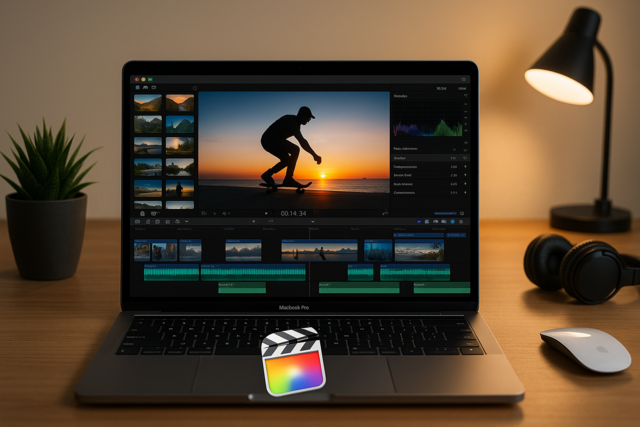The Printer
Although a printer is not required to run a computer, if you are looking to put data on paper you will need the printer to work. Sometimes it can be hard to tell if the printer is on, whether cables are connected properly, and/or if the OS is correctly recognizing the printer.
Power Indicator � Make sure the printer is on by looking for the printer's power indicator. When a printer is on, it will have some sort of light, usually green, letting you know it is currently on. Some printers (usually cheaper models) will not have any sort of light telling you it has power. In that case, check to be certain the power plug is properly plugged into a surge protector (recommended) or wall outlet. Do this by verifying each end of the power cable is securely connected to the printer and to the outlet. Then hit the power button. If the printer still appears not to have any power, chances are you have a serious issue. The manufacturer of the printer should be contacted because as you may need a repair or replacement.
Connected Incorrectly - Generally, a printer will have two cables that come along with it. One acts as a power cable while the other one is called a data cable. When the power cable has been connected, usually the printer will have a light indicating that it is working. For the data cable, you will want to be sure that this is plugged in properly as well--one end connecting to the printer, the other end connecting to the computer. If not connected properly, the printer will not work. The data cable will usually connect straight to the computer, usually on the back of the tower, to an available USB port. Most modern printers connect to the PC using a USB (data) cable.
Error While Printing � Once the printer has been setup, there should be a green light indicating it is on and ready to print. It should be a solid green and not flashing. Often times when a printer has an error it will give off an orange/amber or red flashing light. The error is caused by either a paper jam or an ink/toner cartridge issue. It can also be caused by other issues depending on the printer. Different printers have different lights, which can mean different things. The printer comes with instructions so if you cannot resolve an issue using these steps, refer to the printer manual. It will be able to tell you what each color light on the printer means. Also, some more advanced printers (meaning expensive) will have an LCD screen that will give you more information as well as provide greater level of customization.
Paper Issues � Always make sure your printer has paper. It will not print if there is no paper. The paper is loaded in the printer tray. Sometimes paper will get caught in the printer while printing because it didn't grab the paper properly. The paper will need to manually be removed. Refer to the printer manual which will tell you how to open up the machine so that the paper can be removed properly.
Ink/Toner Issues � If there is an issue with the ink/toner cartridge, usually an indicator light will flash. On more expensive models, an LCD screen will be more specific with the error message. An ink/toner cartridge problem may arise if it is low on ink/toner or if new ink/toner has just been inserted incorrectly or it hasn't yet been calibrated. Be sure that the ink cartridge was inserted into the printer securely. If you have done so and the printer is still not working, try printing out a test page. The printer should be able to print out a test page regardless of whether or not it is connected to the computer. This can help determine whether you have a software printer problem or a physical printer problem. Refer to your printer manual on how to print a test page directly from the printer.
Printer Test Page � A printer can print a Test Page which will help you in figuring out if it is actually working or not. To perform a Test Page, you will usually need to hold down a few buttons on your printer. The printer manual can tell you which buttons to hold down since all printers are different.
Self Test � If the computer's operating system is Microsoft Windows then a Self Test can be performed. For most versions of Windows, you can access the Self Test by clicking "Start," "Settings," and opening up the "Control Panel." You will see either a Printer or a Fax and Printer icon. Use your mouse to Right Click on the printer you would like to test then click the "Properties" option. If your printer does not appear on the list, then it has not been installed (which no doubt is a problem). Within the printer's Properties window, click the "Print Test Page" option. If the printer does print out a test page, then it is working properly. If it can print a Test Page but can't print in other programs, then make sure you have it set as the 'default' printer.Issues with Printer Drivers � If the printer does not have any lights flashing on it and appears to be connected properly, then it may not be printing because of a driver-related error. Be sure to check with the printer manufacturer's website and download any updates for your printer. Also, make sure Windows does recognize it as a printer in the devices/printers area in the Control Panel. If Windows is unable to recognize the printer, or, when connecting the printer Windows pops-up a message saying "unrecognized USB device connected" (or something similar), you have a printer driver issue. The best remedy is to install the printer drivers that came with the printer (usually on a CD) or download the latest printer drivers from the manufacture's website (usually found in the support/download drivers area).
If you are having an issue with your scanner, it may indicate one of several possible problems. It could be cables connected improperly, no power supply, or invalid driver software. To determine the issue, you will need to perform general troubleshooting techniques for your scanner.
Cable Connections � Start by checking to see that all cables are connected properly. A scanner will most likely have two connections located on the back of the scanner. One cable will be plugged into a power outlet, while the other will plug into the computer. Be sure that they are securely plugged in. Some scanners rely solely on the USB cable for power, and thus they don't have a separate power cord. For these scanners, it is wise to connect them directly to the PC USB port rather than connecting them to an unpowered USB hub because that may not generate sufficient power to run the scanner.
Power � Once you have checked all the connections and verified they are plugged in correctly, if the scanner is still not working, you may want to check that the power cord is plugged in directly to a working power outlet. You should always connect your sensitive computer equipment to surge protectors--make sure the surge protectors are powered on and verify current is flowing by plugging other devices into the outlet in question. An indicator light (much like that for the printer) should illuminate on the scanner if it is properly connected. Also, most scanners when plugged in will do a "self-test", meaning they will do a motor adjustment and/or quick scan test. If power is an issue, you need to contact the manufacture for service/repairs. This information can usually be found in the scanner manual.
Other Devices � If you have other devices connected to the computer, then try shutting down your computer and disconnecting non-essential devices. Parallel, SCSI, Firewire, and other USB devices may interfere with the scanner operations.
Drivers � Always contact the manufacture's website for the latest software drivers for your scanner model. If all else fails, do a full uninstall of any scanner software/drivers, reboot the machine, and run the latest scanner driver installation program.
Other Causes and Solutions � It is possible that if an application is running in the background, the scanner may not be able to scan. Do not run any other applications while scanning. Review applications running in the TaskManager.
Keywords used
Control Panel � This is the place on your computer that you are able to control different features such as hardware and software. You will need to become quite familiar with this area as you troubleshoot PC issues.Icon � Displayed on your computer, an icon is a small picture that resembles a feature, program, software or more. For example, a printer or a game will display an icon in certain areas of your computer (like your desktop).
Ink Cartridge � A printer needs ink in order to print and an ink cartridge is what contains the ink. It needs to be replaced when the ink runs out. It comes in various colors.
MS-DOS � This stands for Microsoft Disk Operating System. It is an operating system and can be accessed differently depending upon the version of Windows the user has. Windows 7 and Vista: "Start," then type the letters "cmd." Hit enter. For Windows 2000, XP and NT: Click "Start," then "Run" and type in either "Command" or "cmd." Hit Enter.
Right Click/Left Click - This refers to the two buttons that can be found on your mouse. To "right click" means to click the button on the right and to "left click" means to click the button on the left.
Surge Protector � This is a device that is used to protect your computer and other equipment from electrical surges that can harm your equipment. Instead of plugging in your computer into a power outlet, you should plug it into a surge protector that is then plugged into a power outlet. It helps to protect your computer in the case of lightening strikes or other power surges.
Toner Cartridge � Also known as a laser toner and is for laser printers. It holds the ink (toner) in order to print and can be replaced once it runs out. Toner is dry like fine grains of sand. Ink is liquid.
Website � This can be found on the World Wide Web and is a collection of digital data. For example, videos, text and pictures can be found on a website.
Zip Drives and USB Thumb Drives � This is a removable storage device that allows you to move and save information from one computer to the next at medium capacity. Zip drives are pretty much obsolete now, as most people now use USB "thumb" drives to transfer data quickly from computer to computer. As the name indicates, USB "thumb" drives are about the size of your thumb and plug into your computer's USB port. Once plugged in, you can access the data as you would any other hard drive under "My Computer".Basic Computer Software Troubleshooting
Software TroubleshootingWhen a computer is having trouble with its software there are basic troubleshooting steps to take to try and resolve the problem. Some frequent problems you may run into include: not being able to install a software program; running into an error during software installation; and/or software setup program refuses to launch or reports errors.
Not Able to Install a Software Program � If you are unable to install a software program, then start by making sure the computer is able to "read" the disk or CD. If the CD or disk is "readable" without any errors (you can review its contents under "my computer" without error messages) then the next step would be to make sure your computer meets any software requirements. For example, if your computer does not have enough space on the drive, then the program will not install. Be sure that the software you are installing is compatible with your operating system. Older programs may only work with specific versions of your operating system. For example, some 32-Bit Windows XP programs may not run on Windows 7 64-Bit operating systems (or vice versa).
Serial Number Verification � Sometimes while installing software, Serial Number Verification or CD Key is required to install the program. This Key or Serial Number should have been included in your software package. Be sure you are entering the number correctly. If it asks for a Key or Serial number and you do not have one or if it is not working, you will need to contact the developer of the software.
Errors While Installing Software � If there has been an error during the installation of the software make sure you have checked the computer requirements of the program. If, for example, the computer has run out of space in the middle of an install, it would create an error and the program would not be able to install. You can also try to run the computer in Safe Mode and then try to install the program. Also check to see that the CD doesn't have any damage to it such as scratches. There are ways to "clean" a disk if it appears scratched. The greatest method for troubleshooting this, however, is by the exact error message reported. If it's an i/o read error -- there is a problem with the media. If it's a C++ or other programming runtime error, that's a software issue or "bug". Check the company's website for any patches/updates. Search their knowledgebase for the error message you are receiving. Most likely, you're not the first to receive the error message and someone has already posted it on a message board.
Not Loading � Sometimes software will not load or will have an error while trying to load. Sometimes when this happens an error explanation will pop-up and tell you how to fix the problem. If that is not happening, see if any updates need to be made to the program. When trying to run software, if other programs are running at the same time, it may cause issues. A reboot of the computer can always be helpful and should happen at least once after a program has been installed. Make sure you're running no other programs when you attempt a setup. Also, you should never run more than one setup program at once. For example, you shouldn't install new software while at the same time running Microsoft Updates.
Date Correction � Sometimes the software that is trying to be loaded will rely on the computer's date and this can cause issues if the date is incorrect. To set the date it will depend on the computer's operating system, however, if you have Windows, do the following: Right Click on the "Systray" (this can be located at the bottom right hand of the screen). Click the "Adjust Date/Time." A new window will open and from there you can make adjustments to the Time, Date and Time Zone you live in. Be sure to click "Apply" and then click "OK" to save all your settings.Suggestion: If you have tried everything but still have issues trying to install or run software, you should completely uninstall the software (if it did in fact install), reboot the computer, and then try a full reinstall with no other programs running at the same time.
Issues with Reading CDsWhile downloading software from a CD there may be errors that occur. It may not be reading properly for several reasons. Scratches on a CD, multiple programs running at once or incorrect CD-ROM setup can cause the CD not to run and ultimately the software will not install on the computer.
Dirty CD � CDs will occasionally get dusty and dirty over time, causing either the CD or CD-ROM to read improperly. To fix this you may want to get a cleaning kit. However, you may also use either cotton cloth or shirt. Starting with the middle of the CD, wipe against the tracks. Do not wipe in circles (that would be with the tracks), but wipe from middle, straight out to the edge. If you wipe the tracks it may cause more scratches. You can also use some water or pure alcohol. This will not impact or ruin the CD.
Multiple Programs Running � Also known as Third-Party programs running, if there are too many program running in the background of your computer it may cause an error with the CD. Spyware/malware in particular is notorious for causing odd problems like this. To resolve this, use End Task to turn off those programs and/or run a virus check.
Improper Setup of CD-ROM � Since the CD-ROM is what reads the CD, if it were setup wrong it can cause issues. To see if there are conflicts with the CD-ROM you will need to check the Device Manager.Bad CD � It is possible that the disk you are trying to read is a "bad" CD because it has been burned incorrectly. You may also have burned a CD that was not allowed to be copied and is protected so that the information or program could not be duplicated. To fix this you should try to burn the CD again and verify that you are allowed to be copying that particular software.
Error from Auto Run � When a CD is inserted often times it will automatically begin running. This will sometimes cause an error. In order to fix it you will need to turn off the Auto Run feature. To do this, remove the CD from the computer and then replace it back it into the computer. On the keyboard, hold down the Left Shift key. This will automatically disable the auto-running feature.
Keywords used
Auto Run � Also known as "auto play" -- this occurs when a CD is inserted into the computer and automatically begins to start up without the user having to click any programs.
Burned � This is when data or information is copied onto a disk. The word "burn" refers to an actual laser that is used to "burn" the information onto the disk.
Disk � This is a place where data has been saved and is stored for future use.
Left Shift Key � This key can be found on the keyboard and refers to the key on the left that says "Shift." It will typically have an arrow on the key as well.
Read a Disk/CD � You can "read" a disk or CD by reading the files located on the drive. Sometimes a CD or disk will auto play and when this happens, Right Click the drive and hit "Explore" to browse the drive.
Tracks � The track on a CD is where the laser has burned/embedded the data.































